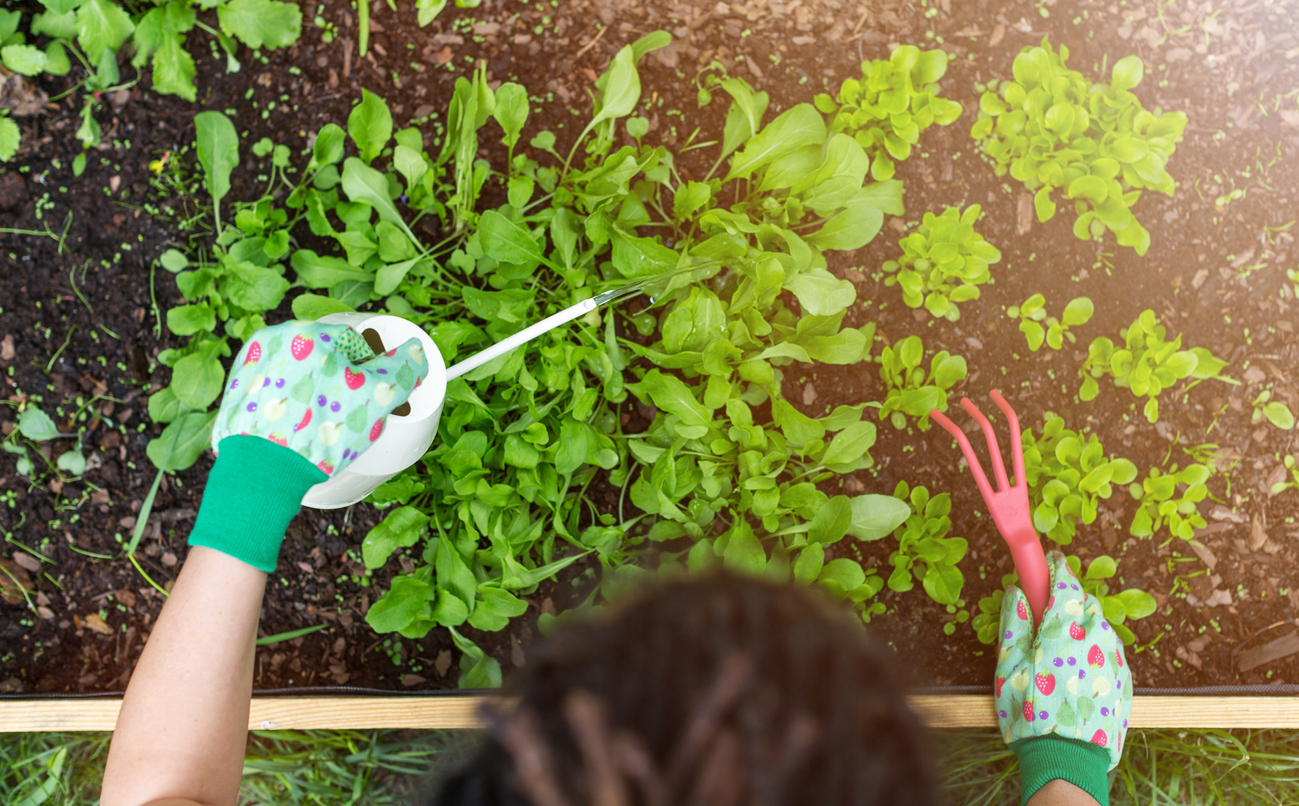
Gardener watering and tending to radishes in the garden
Water
Once your radishes are nestled in—whether it’s in a container, a raised bed, or open ground—consistency is key when it comes to watering. Radishes need at least 1 inch of rain every week. One way to monitor this is to leave an old coffee can out in your garden to see how much rain accumulates. Radishes want soil that’s consistently moist, but not soggy.
If you’re not getting consistent rainfall, you’ll want to water several times per week so your soil maintains moisture. If the top of the soil is a little dry, lay down a layer of mulch to help retain moisture; ground-up leaves, clean grass clippings (no pesticides), or compost work well. Without enough water, your radishes will be tough and bitter.
It’s always best to water early in the morning, so your plants can soak up the water and put it to work. Watering earlier in the day also gives the sun time to burn off any water on the leaves, which can lead to disease if they stay wet. When you do water, aim for the base of the plant. Try not to get the leaves wet if you can (unless you’re blasting off pests), as that can open the plant to fungal infection.
Weeding
If you’ve planted your radishes in containers, weeds shouldn’t be much of a problem. If you do see weeds, pull them early and often—but be careful about it. Gently loosen the soil around your plants, especially when they’re young, so you don’t disturb their roots. For containers, this is another good reason to get yourself some fresh garden soil; it’s one less piece of aggravation to deal with during the growing season.
But even if you’re growing your radishes in raised beds or directly in the ground, properly preparing your soil is still an excellent preventive measure against the emergence of weeds. When you till or cultivate the area where you’ll plant your radishes, remove weeds and debris. You can also amend your garden bed with a little commercially available garden soil. Give your radishes all the advantages you can to ensure a healthy crop.
If weeds spring up around your radishes during the growing season, work the soil around the base of the plants with a hoe or hand rake—only deep enough to kill the weeds and not damage the plant.
Fertilizer
Radishes grow so fast that they don’t need to be fertilized. In fact you’re more likely to damage your radishes with fertilizer because you’ll end up with huge leaves and small bulbs.
How often do you have to water your radishes? Do you have any challenges growing radishes? Please tell us your tips for nurturing healthy radishes.


 Previous
Previous


a few of my radishes bulbed up but many were long without any bulb developing. Why?”
Hi David,
The common reasons for radishes not to grow a bulb are:
* the radish seeds may have been sown too thickly
* overcrowding you will want to thin them to 1 to 2 inches apart
* Too much nitrogen in the soil
* weather is too hot, radishes don’t like hot weather they really like between 50-65F
* not enough sun, radishes need full sun or partial shade